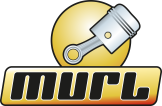This guide describes how to set up the development environment for the creation of classic Windows Desktop applications using the Murl Engine. It applies to the following operating systems:
- Windows XP
- Windows Vista
- Windows 7
- Windows 8/8.1
- Windows 10
Prerequisites
The following prerequisites have to be met in order to start developing Murl applications on Windows:
Compiler/IDE
The first step is to download and install one of the supported IDEs in order to be able to build a desktop application using the Murl Engine. It is recommended using one of the following versions of Visual Studio provided by Microsoft in any of the available editions (Express, Standard, Professional etc.):
- Visual Studio 2008 (on request)
- Visual Studio 2010
- Visual Studio 2013
See the Microsoft Visual Studio download page:
http://www.microsoft.com/visualstudio/eng/downloads
Or visit the Microsoft Download Center to search for your preferred flavour of Visual Studio:
http://www.microsoft.com/en-us/download/developer-tools.aspx?q=developer+tools
Additionally, it is recommended installing the most recent service pack(s) for your chosen Visual Studio version. Please check the Microsoft Download Center.
Optionally, you may want to install the following extensions:
The Murl Engine is using UTF-8 encoding for String objects. You should change the file encoding in Visual Studio also to UTF-8 to avoid unexpected behavior: Choose in menu "File" -> "Advanced save options" -> "UTF-8 without signature"
DirectX SDK
As a second step, it is also necessary to download and install the latest DirectX SDK (June 2010). Download it here:
http://www.microsoft.com/en-us/download/details.aspx?id=6812
Graphics Driver
In addition, it is strongly recommended to install/update the graphics driver to the latest version that is directly provided by your GPU manufacturer. This is especially important, if you intend to use the Murl Engine on top of OpenGL, as the original Microsoft graphics driver usually only support an outdated version of the OpenGL API. Visit your GPU manufacturer's website for suitable driver downloads:
- nVidia: http://www.nvidia.com/Download/index.aspx?lang=en-us
- AMD: http://support.amd.com/us/gpudownload/Pages/index.aspx
- Intel: http://downloadcenter.intel.com
Installing the Murl Engine
You should first pick a location where you want to install the Murl Engine and create that folder. Note: When choosing the name of the directory you should omit any white spaces, umlauts or other special characters. This is a precaution as 3rd-party toolchains for possible future target platforms might not be as tolerant of such names as the currently supported ones.
Download the latest Murl Engine archive and unzip it to that newly created folder. Get it from our Downloads section:
http://murlengine.com/?murlpage=download&murlfile=latest
And that's it for installing the Murl Engine for Windows Desktop development. After unzipping, you should see the folders "Dashboard.app", murl" and "tutorials" inside the target folder.
Testing your Murl Engine installation
You can use one of the Murl Engine tutorials to test your installation.
Start Visual Studio, choose "Open -> Project/Solution" from the "File" menu and select one of the following solution files depending on your Visual Studio version:
- Visual Studio 2010:
tutorials/chapter01/00_hello_world/project/win32/vs2010/hello_world.sln - Visual Studio 2013:
tutorials/chapter01/00_hello_world/project/win32/vs2013/hello_world.sln
Choose "Start Debugging" from the "Debug" menu to compile and run the first tutorial. After finishing the build, you should see an empty application window stating "Hello World powered by murl engine" in its title bar.
See Tutorial #00: Hello, World! for details about that specific tutorial.
Next Steps
Once you have successfully verified that your installation is working, you can continue browsing the other available tutorials from the Tutorials page to get step-by-step insights into the workings of the Murl Engine.
See also the Target Installation Guide for details about preparing your development environment for building other targets.
